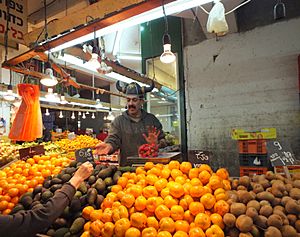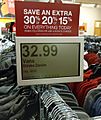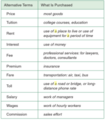Price facts for kids
Have you ever wondered how much something costs? That "how much" is called the price. Price tells us the value of a product (like a toy or a book) or a service (like getting your hair cut or a ride on a bus). We usually talk about price in terms of money.
Contents
What is Price?
Imagine a time before money existed. People had to trade things directly. Let's look at an example:
Trading Goods
Peter raises sheep for their soft wool. Sally raises chickens for their fresh eggs. Winter is coming, and Sally wants to make a warm wool coat.
She figures out she needs wool from two sheep for her coat. Sally goes to Peter and asks him for the wool. Peter tells her what he wants in return for his wool. Sally might offer to trade some of her chicken eggs for the wool.
Price Without Money
In this trade, the "price" of Peter's wool is the number of eggs Sally gives him. If Peter agrees to take 20 eggs for the wool, then 20 eggs is the price. This shows how price can be expressed in other goods.
Why We Use Money
Trading goods directly, like eggs for wool, can be tricky. What if Peter doesn't need eggs? Then he won't trade his wool for them. The "price" of his wool in eggs would be zero for Sally.
Money Makes Trading Easy
To solve this problem, people invented something called money. Money is like a special tool for trading. It can be cash or digital currency.
If Peter doesn't need eggs, Sally can sell her eggs to someone else for money. Then, she can take that money to Peter. Peter will accept the money for his wool because he can use that money to buy whatever he needs.
Price With Money
The amount of money Peter asks for his wool is its price. So, if Peter asks for $50 for the wool, then $50 is the price. Money makes it much easier for people to buy and sell things they need or want.
Images for kids
-
The competitive price system according to Paul Samuelson
See also
 In Spanish: Precio para niños
In Spanish: Precio para niños






